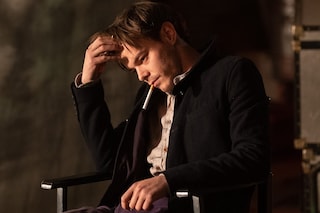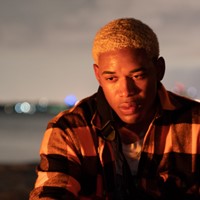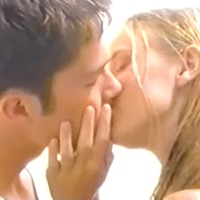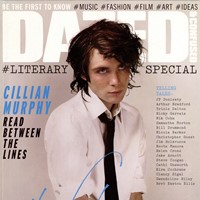As the follow up to 2019’s The Souvenir is released, the director and lead actress discuss the feature being touted ‘the best film of 2021’
Art is life. Or so goes the subtitle for Julie’s proposed graduation project in The Souvenir Part II, the beguiling, introspective fifth feature from Joanna Hogg. Julie, played once again by Honor Swinton Byrne, has pitched an idea for a student film, The Souvenir: Art Is Life. “I don’t want to show life as it plays out in real time,” Julie exclaims. “I want to show life as I imagine it. And that’s what cinema is!” A roomful of white, middle-aged men reject her plea for funding.
Named the best film of 2021 by Sight & Sound magazine, The Souvenir Part II picks up two days after 2019’s The Souvenir. In the 1983-set Part I, Julie is left reeling by the death of her older boyfriend, Anthony, a loquacious charmer with a heroin addiction. To my 2019 eyes, Hogg crafted such a raw, satisfying time capsule, a follow-up didn’t seem necessary. I was wrong. The sequel not only develops and recontextualises the ideas of Part I, it’s begging for a third instalment in the Souvenir franchise – and a spinoff for Richard Ayoade, too.
Initially, Hogg planned to shoot both films back to back, but faced a two-year hiatus due to budget issues. “I definitely felt frustrated,” the 61-year-old director admits. “I was afraid that if the financiers were unhappy with Part I, they wouldn’t make Part II. There was a fear of letting go, and having it taken away from me.” However, Part I was a critical hit: Sight & Sound named it their top film of 2019, too.
At the 2021 London Film Festival, which is when I speak to Hogg and Swinton Byrne separately at the Londoner Hotel, the audience collectively gasped when Julie accidentally drops a piece of ceramic. At other festivals, Swinton Byrne observed more audible responses during, for instance, Julie’s sex scene. “I think people here (in London) are more compassionate towards the pot breaking (than at Cannes),” the 24-year-old actor notes. “It’s a softer crowd.”
In the summer of 2017, Swinton Byrne, then 19, was cast 10 days before the first Souvenir was shot. Hogg’s filmmaking style – no scripts, just improvisation, like an arthouse Curb Your Enthusiasm – meant Julie’s “um”s and “ah”s were a first-time actor’s genuine hesitancy. Since then, Swinton Byrne has volunteered for a year in Africa, started university, and evolved like any young person does. Likewise, the Julie of Part II isn’t the Julie of Part I.
“It’s fitting that I went away and changed so much,” Swinton Byrne says. “Julie’s slightly tougher, slightly more grown-up, slightly more confused. She’s broken and trying to fix herself.” Hogg and Swinton Byrne pinpointed when Julie was experiencing denial, anger, bargaining, and so on. “Julie’s student film represents the seven stages of grief as well.”
In Part I, Julie resembles an artist on the outside looking in. Anthony’s overdose offers a catalyst. Whereas Julie used to be emotionally manipulated by an older man, in Part II she emerges as a filmmaker who orchestrates actors, lights, and props like chess pieces – just with “um”s and “ah”s. Through grief, Julie’s creative powers expand overnight.
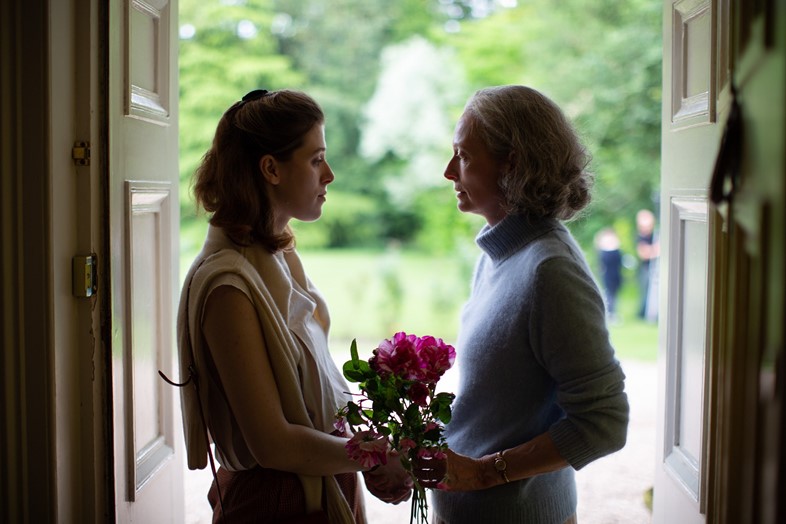
As such, the mise-en-scène reflects its protagonist’s newfound artistic development. There are shifting aspect ratios, dream sequences, and playful cuts. The sequel is lighter, both in tone and camera movement, and Julie’s version of The Souvenir – yes, we see a film-within-a-film – poignantly conjures up Anthony’s ghost. Julie thus translates her trauma into art: the scenes that she rehearses, blocks, and shoots with her crew are the same scenes we witnessed her suffer through in Part I.
“Not many dramas like The Souvenir have a sequel, so you never find out what happens after the climax,” Swinton Byrne says. “You then realise you haven’t even reached the climax – that’s in the second part. The way Joanna explains it is, it couldn’t have been one film. It had to be two halves of a whole.”
To me, The Souvenir Part II requires the grounding of Part I for its more fanciful moments to carry emotional weight. Likewise, Fellini had to direct neo-realistic dramas like La Strada before moving onto his fantastical, self-reflective movie about movie-making, 8½. Hogg responds, “I think it’s more about telling the story of the relationship in Part I, and then Part II is a processing of that relationship… I was reanimating those days in my early twenties, the creativity that I was experiencing then. Both Souvenirs are kind of remakes of an earlier time in my life.” She adds, “I don’t think I’ve made my 8½ yet.”
Hogg imagined The Souvenir as two movies in 1998, jotting down ideas in a notepad that was placed aside for two decades. During this period, she directed TV (Casualty, EastEnders, whatever Reaching for the Moon is) and three dissections of the middle-class: Unrelated, Archipelago, and Exhibition. Martin Scorsese, an Archipelago admirer, offered to executive-produce both Souvenirs. Add in festivals and five-star reviews, the widespread attention led to an extensive press tour for Hogg in 2019.
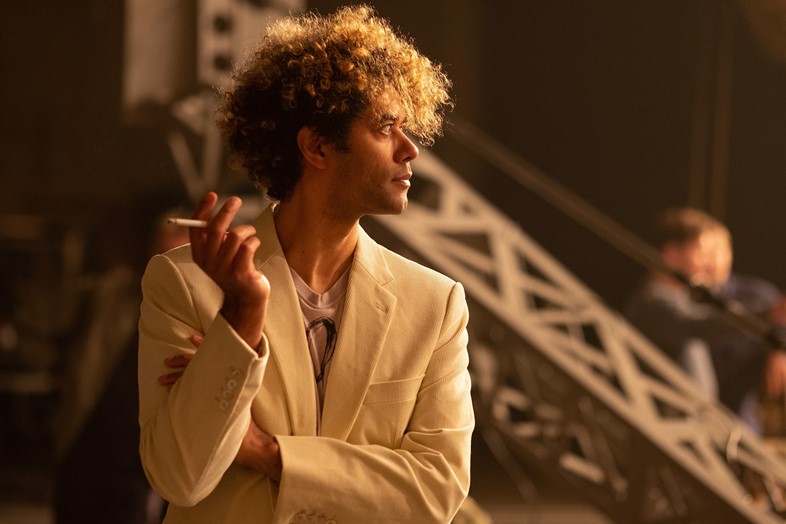
Notably, Julie is admonished by a filmmaker, Patrick (Ayoade), for offering generic feedback: “It’s good. It excites me!” Was this based on audience responses to Part I? “Uh… no,” Hogg says. “I blocked my ears to all reactions.” How is that possible, when she did so many interviews? “I must have been sleepwalking through it. I know I talked to you in that time, but I resisted it.”
Although the celluloid cinematography emulates the blurriness of memory, the improvised, often overlapping dialogue places the action firmly in the present. Intriguingly, Hogg suggests that journalists have overstated the autobiographical overlap. “Even Part I, I don’t know if that really happened to me in that way,” the director says. “There are odd moments where it’s based on something that happened, and I’m negotiating with myself as to whether to press on with my memory of it, or to allow it to live as something else. So often, I let it live as something else. I’m not trying to do a print of my life.”
Lines are further blurred by whom Julie is based on. In Part I, Julie represents Hogg in the 80s, but Part II slyly comments on Hogg directing the 2019 film. “I didn’t consciously study Joanna,” Swinton Byrne says. “But I noticed that I began to bite my nails – and she bites her nails – in the second one. I was like, ‘My God, I think we’re becoming one!’” The parallels are more overt when Julie interacts with actors. “I tried to channel Joanna’s calmness and warmth while she directs. It came automatically. It’s what I’d observed for years.”
In reality, Hogg’s 1986 short was called Caprice and starred her friend Tilda Swinton – the mother of Swinton Byrne, and who also depicts Julie’s onscreen mother. Caprice started with Matilda Swinton, as she was known then, flying into the front page of a glossy publication. On the surface, Caprice didn’t delve into Hogg’s grief. That Julie creates The Souvenir is, then, a rewriting of the past.
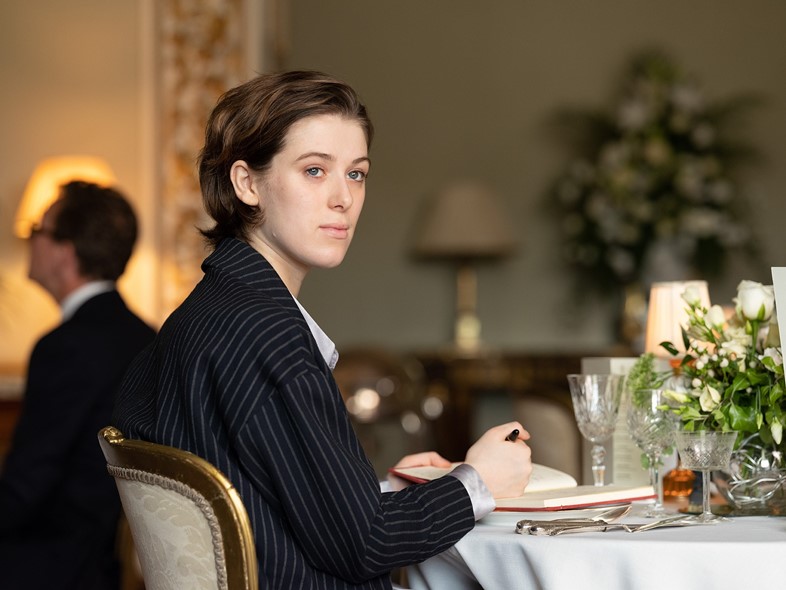
“Caprice is about a young woman coming to accept how she looks, and who she is, through going on a journey in a fashion magazine,” Hogg explains. “I wanted Julie’s Souvenir to be more serious, to be the film I would have loved to have been capable of making in 1986.” Caprice, though, isn’t YouTube-able. “I’ve been trying to hide Caprice but every now and again, someone uploads it,” Hogg admits with a laugh. “I think there’s something about seeing Part II, and what Julie does, unencumbered with images of my early work. You can’t control how people watch something but I’m going to try.”
Hogg lists her influences for Caprice – and, thus, Julie’s Souvenir – as the Cinéma du look movement, and musicals from the 40s (Lady in the Dark, Cover Girl) and 70s (All that Jazz, One from the Heart). Julie’s music video, though, refers to a real directing gig that remains unreleased. “The record company decided I was making fun of (the band) Living in a Box through these female models interacting with them,” Hogg says, frowning. “In fact, I thought I made them look really cool.”
Due to university commitments, Swinton Byrne couldn’t appear in Hogg’s next film, The Eternal Daughter, which stars Tilda Swinton and was shot in Wales during the pandemic. As Hogg is mid-edit, it’s dominating her thoughts – she hasn’t considered, for instance, if Part II is allowing strangers to dissect her subconscious. “I always feel exposed when I’m writing something,” Hogg says. “But once I’ve made it, it recedes, because it doesn’t belong to me at that point… By the end, I can’t see it anymore. There’s a difficulty sitting here, right now, and conjuring up that thing that I’ve said goodbye to.”
What’s for sure is that Julie offers representation for introverts who stumble upon their words. Usually, mumbling characters are depicted as incompetent, or, in Eighth Grade, a comic conceit for teenagers lacking verbal skills. What about adults? “That’s what I like about The Souvenir,” Swinton Byrne says. “It’s about honesty…” She pauses and starts again. “It’s about people being nervous, making mistakes, and being human. I don’t see that enough in films. I want to. I’m sick of seeing how the perfect, non-existent person talks. Nobody speaks in perfect sentences. And if they do, there’s something wrong with them.”
The Souvenir Part II is out in UK cinemas on February 4


